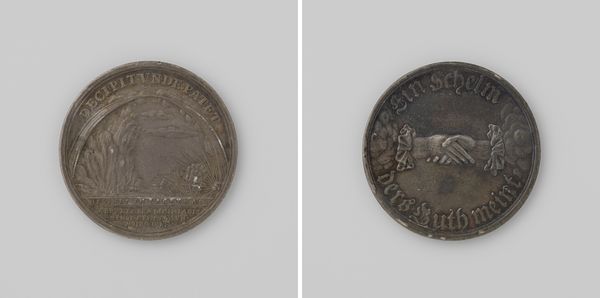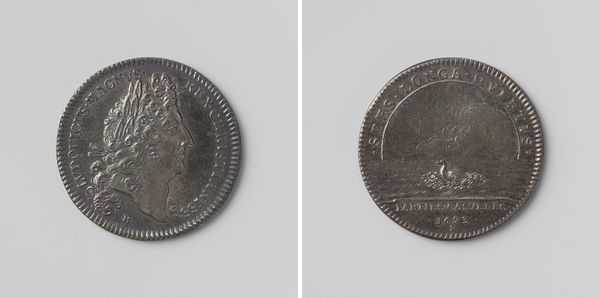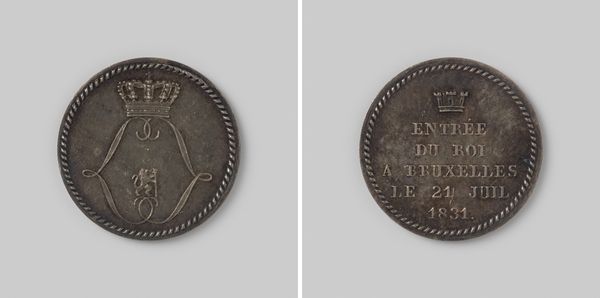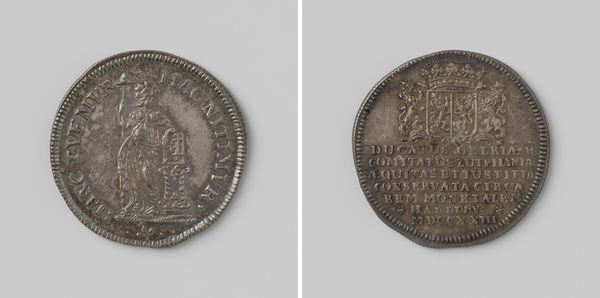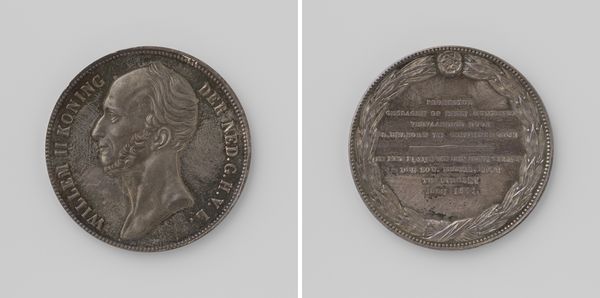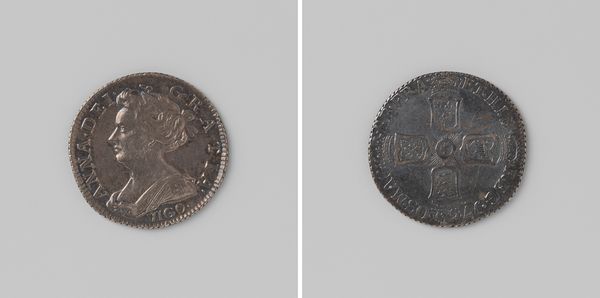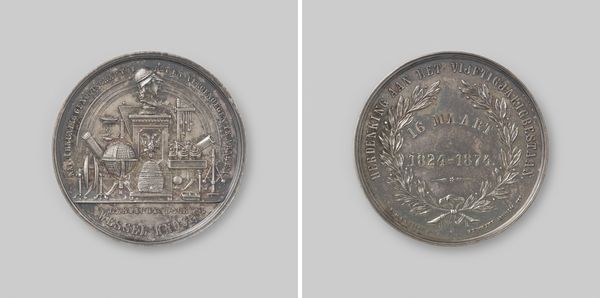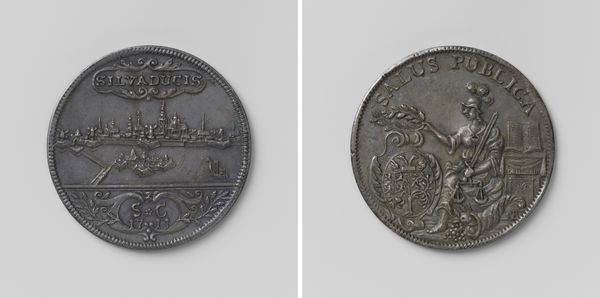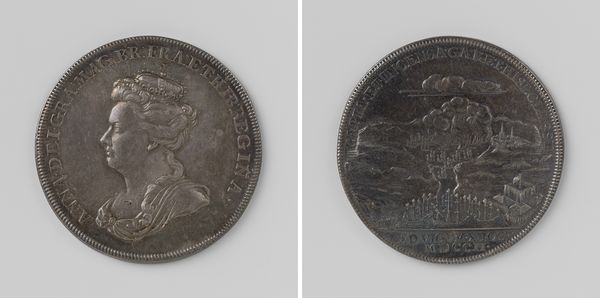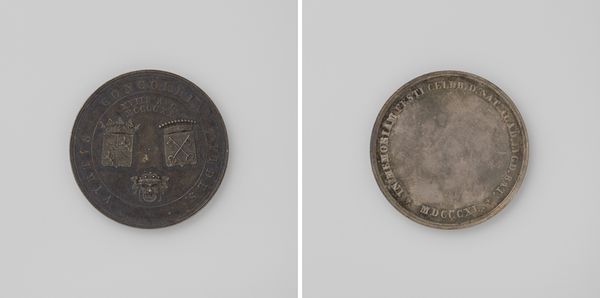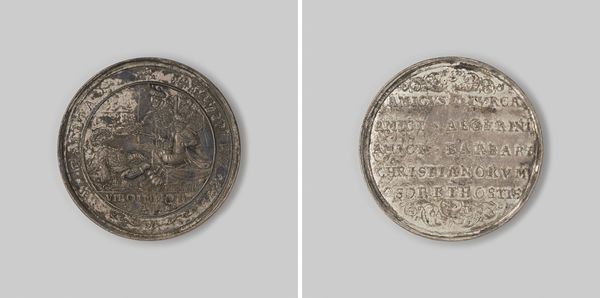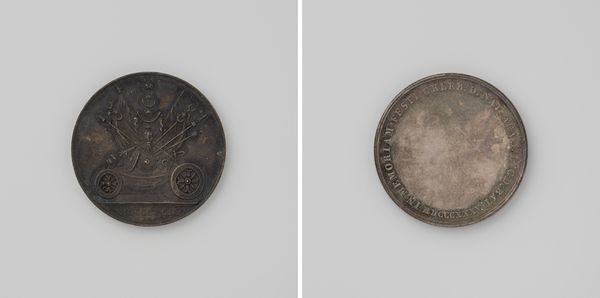
print, metal, engraving
#
16_19th-century
# print
#
metal
#
history-painting
#
engraving
Dimensions: diameter 3.2 cm, weight 16.93 gr
Copyright: Rijks Museum: Open Domain
Curator: This unassuming metal piece is titled "Epidemie op Majorca, dertig sous," dating back to 1821. Currently residing here at the Rijksmuseum, it’s categorized as a print, specifically an engraving. Editor: My first impression? Austere. Utilitarian. The bare metal and straightforward engraving feel devoid of embellishment, serving a stark, communicative purpose. Curator: Exactly. "Epidemie op Majorca, dertig sous," or "Epidemic in Majorca, Thirty Sols," reveals itself through a socio-historical lens. The "30 sous" indicates its value as currency, while "Epidemie" hints at a darker context – most likely it relates to an attempt to address the public health crisis on the island. We believe such tokens may have been distributed to help facilitate economic transactions during the quarantine and were specific for one locale and time. Editor: So, even its value becomes symbolic during crisis. Interesting how money, normally a straightforward marker of exchange, is here shaped by fear, illness and perhaps even a glimmer of communal care. Did it become a symbol in and of itself? A totem of public anxiety? Curator: Conceivably. It's a cultural artifact that speaks to the practical and psychological weight of currency when daily structures collapse and fear rises. The images are very specific and restricted, to the island itself. These may well be marks of the authorities who issued the coinage. We see that so often during disease events. Editor: That rhomboid emblem is particularly fascinating—some symbol of civic authority on Majorca itself, I presume. Beyond economics, these kinds of marks provide an ongoing reassurance—visual evidence of order in chaos. In some ways, then, isn't this coin itself a message intended to reduce the sense of chaos and assure people their society continued, despite the public health crisis? Curator: Precisely. And the date engraved above – 1821 – grounds it within a historical narrative far bigger than its own material form might initially imply. It’s more than money; it is a message through symbolic representation and also the weight of a terrible history. Editor: I concur entirely. What appears merely to be currency, a functional instrument, transmutes under historical study into something of poignant societal commentary—a marker struck out of both economic imperative and anxious communal hope. Curator: Absolutely. It makes one wonder what currency of our present might carry comparable implications to people observing from centuries onward.
Comments
No comments
Be the first to comment and join the conversation on the ultimate creative platform.
